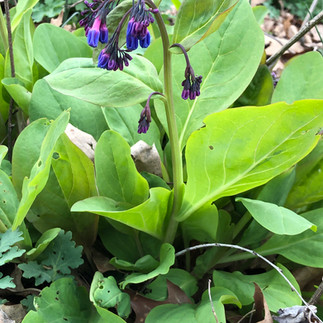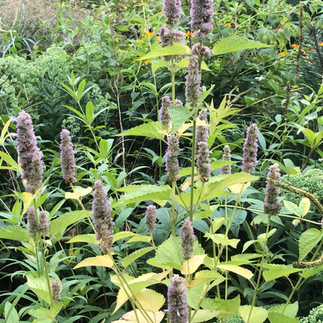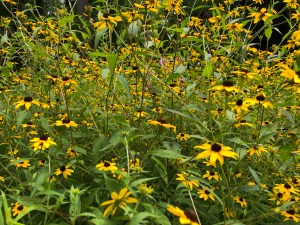Native Plants: Flower Power in the Shade!
- Nuts for Natives
- Apr 12, 2023
- 2 min read
Updated: Apr 19, 2023
Flowers from March to October in Part Shade.

As a new gardener, whenever I had extra time, one of my favorite things was to get up early on a weekend, grab a cup of coffee to go and head to the nearest nursery as soon as it opened to explore and pick up a few plants. I did that for a number of years before I realized to always have flowers blooming would require actual planning! Who knew?
Having recently created a new garden bed in part shade, I was thinking about how to get a long, long succession of perennial blooms. I gathered this list of commonly available, easy to grow native perennials suited to part shade, in mostly clay soils with medium moisture levels.
If you are north or south of Washington D.C., you may need to adjust bloom times depending on how far north or south you are. We all have so many variables in our gardens that might affect bloom time. You may have even noticed the same plant in different locations in your garden blooming at different times. Sun, soil or moisture conditions can affect bloom time so please use this as a rough guide as your results may vary!
March
Creeping Phlox (Phlox Stolonifera)
Golden ragwort (Packera aurea)
Virginia bluebells (Mertensia virginica)
April
Creeping Phlox (Phlox Stolonifera)
Golden ragwort (Packera aurea)
Golden alexanders (Zizia aurea)
Foamflower (Tiarella cordiofolia)
Virginia bluebells (Mertensia virginica)
Wild geranium (Geranium maculatum)
Woodland phlox (Phlox divaricata)
Wood poppies (Stylophorum diphyllum)
May
Bluestar (Amsonia tabernaemontana or Amsonia hubrichtii)
Dwarf crested iris (Iris cristata)
Golden alexanders (Zizia aurea)
Phlox 'May Breeze' (Phlox divaricata)
Spiderwort (Tradescantia virginiana)
Wild geranium (Geranium maculatum)
Wild hyacinth (Camassia scilloides)
June
Coneflower (Echinacea purpurea)
Eastern bee balm (Monarda bradburiana)
Indian Pink (Spigelia marilandica)
Skullcap (Scutellaria incana)
July
Anise hyssop (Agastache foeniculum)
Bee balm (Monarda fistulosa 'Claire Grace')
Black-eyed susan (Rudbeckia fulgida)
Coneflower (Echinacea purpurea)
Joe pye weed (Eutrochium maculatum)
Obedient plant (Physostegia virginiana)
Penstemon (Penstemon digitalis)
Skullcap (Scutellaria incana)
August
Anise hyssop (Agastache foeniculum)
Black-eyed susan (Rudbeckia fulgida)
Heuchera 'Autumn Bride' (Heuchera villosa 'Autumn Bride')
Great blue lobelia (Lobelia siphilitica)
Mistflower (Conoclinium coelestinum)
Obedient plant (Physostegia virginiana)
Turtlehead (Chelone glabra)
September
Bluebird Smooth Aster (Symphiotrichum laeve 'Laeve Bluebird')
Heuchera 'Autumn Bride' (Heuchera villosa 'Autumn Bride')
Goldenrod (Solidago flexicaulis)
Great blue lobelia (Lobelia siphilitica)
Mistflower (Conoclinium coelestinum)
Obedient plant (Physostegia virginiana)
Turtlehead (Chelone glabra)
White wood aster (Euryibia divaricata)
October
Bluebird Smooth Aster (Symphiotrichum laeve 'Laeve Bluebird')
Goldenrod (Solidago flexicaulis)
Heuchera 'Autumn Bride' (Heuchera villosa 'Autumn Bride')
Mistflower (Conoclinium coelestinum)
White wood aster (Euryibia divaricata)
If you have others to recommend, please do add them in the comments. Succession planning for perennial flowers is sure to spur a superb season of blooms, even in shade!
Happy gardening.


























































































































Comments